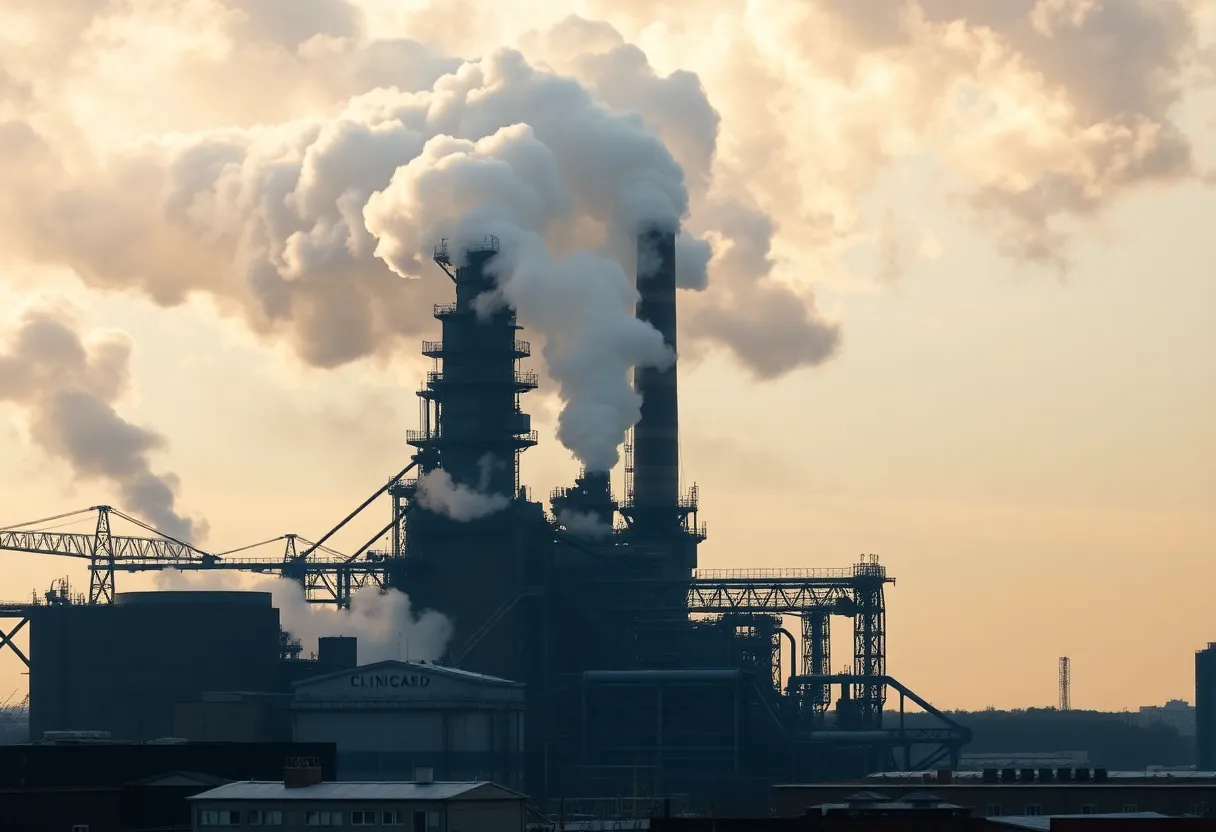News Summary
Cleveland-Cliffs’ Cleveland Works is under fire for its massive emissions of 4.2 million metric tons of greenhouse gases annually. As the largest source of pollution in Cleveland, the facility’s emissions are a roadblock to the city’s net-zero targets by 2050. While modernization options exist, including hydrogen and natural gas technologies, economic feasibility and historical funding gaps pose challenges. City officials stress the importance of balancing emissions reduction with economic competitiveness as the demand for low-carbon steel rises.
Cleveland, Ohio – Cleveland-Cliffs’ Cleveland Works, a steelmaking facility, is facing scrutiny for its significant emissions of greenhouse gases. The plant emits approximately 4.2 million metric tons of greenhouse gases each year, making it the largest source of planet-warming pollution in the city. This emission level poses a serious challenge to Cleveland’s ambition to reach net-zero emissions by 2050, as highlighted in a report by the advocacy group Industrious Labs.
The facility employs two blast furnaces that utilize coal to refine iron ore into steel. These emissions not only hinder climate goals but are also linked to adverse health outcomes, including an estimated 39 early deaths annually, alongside 1,700 lost workdays and more than 9,000 asthma cases. Unfortunately, this contributes to Cleveland’s ranking as the fifth-worst city in the nation for asthma sufferers.
There is a pressing need for Cleveland-Cliffs to address these emissions if the city hopes to achieve its climate action plans. An investment decision concerning the aging Blast Furnace #6, which is nearing the end of its operational life, could determine the future direction of the facility. It remains uncertain whether Cleveland-Cliffs will opt to cut emissions or will reinvest in coal-dependent processes. Currently, as investment strategies are under evaluation, the community awaits critical developments in the company’s operations.
While Cleveland-Cliffs has earned recognition as a 2023 Goal Achiever in the Department of Energy’s Better Climate Challenge for its national emission reduction efforts, external factors have hindered further advancements in clean energy technology. The previous administration’s cessation of funding for clean energy projects has created obstacles for the company in adopting greener production methods. Additionally, the CEO’s withdrawal from a federally funded initiative to transition its Middletown Works into a producer of green steel reflects ongoing challenges, particularly related to hydrogen supply.
Industrious Labs has suggested that modernizing the facility with equipment capable of using natural gas or hydrogen could result in emission reductions of over 30%. Transitioning to electric arc furnaces, powered by carbon-free energy, represents another potential pathway forward. This approach could decrease emissions by as much as 47%, with the possibility of achieving reductions as high as 96% with further investments in green hydrogen technology.
Despite these promising solutions, challenges persist, especially in terms of cost. Producing low-carbon steel is approximately 40% more expensive than traditional steel, making substantial investment in these clean technologies difficult. Nevertheless, Cleveland Works has made some strides in improving energy efficiency by tapping into waste heat for electricity generation and has recently boosted its combined heat and power generation by 50 megawatts.
Both city and county officials emphasize the importance of economic feasibility alongside emissions reductions, acknowledging the competitive pressures from external investments, such as plans by Hyundai to develop low-carbon steel production in Louisiana. Such developments underline the need for Cleveland-Cliffs to innovate and adapt in order to remain competitive, particularly in sectors like electric vehicles where demand for low-carbon steel is increasing.
As Cleveland strives to establish itself as a leader in clean steel production, significant efforts will be required to navigate the challenges posed by emissions and the associated health risks. Failure to effectively address these issues may prevent the advancement of both public health and environmental goals set for the future.
Deeper Dive: News & Info About This Topic
HERE Resources
Cleveland’s Steel Plant Challenges City’s Climate Goals
Cleveland Business Owners Frustrated by Carnegie Avenue Construction
Cleveland Aims for Net-Zero Emissions by 2050
Construction Industry Faces Challenges with Tariff Volatility and AI
Additional Resources
- Ohio Capital Journal
- Canary Media
- Spectrum News 1
- Cleveland.com
- Manufacturing Dive
- Wikipedia: Climate Change
- Google Search: Green Steel Production
- Google Scholar: Emissions Reductions Steel Industry
- Encyclopedia Britannica: Steel
- Google News: Steel Emissions Cleveland

Author: STAFF HERE CLEVELAND WRITER
The CLEVELAND STAFF WRITER represents the seasoned team at HERECleveland.com, your premier source for actionable local news and information in Cleveland, Cuyahoga County, and beyond, delivering "news you can use" with in-depth coverage of product reviews for personal and business needs, local business directories, politics, real estate trends, neighborhood insights, and state news impacting the region—backed by years of expert reporting and robust community input, including local press releases and business updates, while providing top reporting on high-profile events like the Rock and Roll Hall of Fame inductions, Cleveland International Film Festival, and holiday parades, alongside key organizations such as the Cleveland Clinic, Cleveland Orchestra, and Great Lakes Science Center, plus leading businesses in manufacturing and healthcare like Sherwin-Williams and University Hospitals, and as part of the broader HERE network including HEREDayton.com, offering comprehensive, credible insights into Ohio's vibrant landscape. HERE Cleveland HERE Dayton





